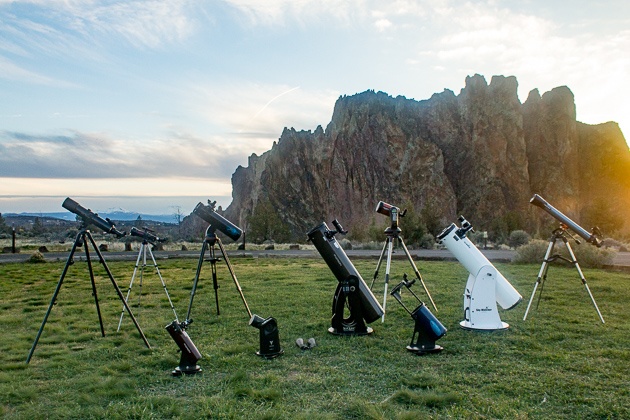
For the past few days, I’ve done a lot of talking about differences between types of telescopes and mounting systems. On occasion, I’ve mentioned some of their parts, though I haven’t focused on that.
Today, I will.
This post is meant to be a brief overview of differences between telescopes and their parts. If you want some more in-depth explanations, I’ll link back to those I’ve already written.
In the image above, you see just a few different examples of telescopes. And just in this image, they range far and wide. Most stand on tripods, but some don’t. I can see two different telescope shapes. Some have the eyepiece in different places.
There are more variations of telescopes than are shown here.
So climb on board…I’m about to take you on a telescope tour!
Continue reading
